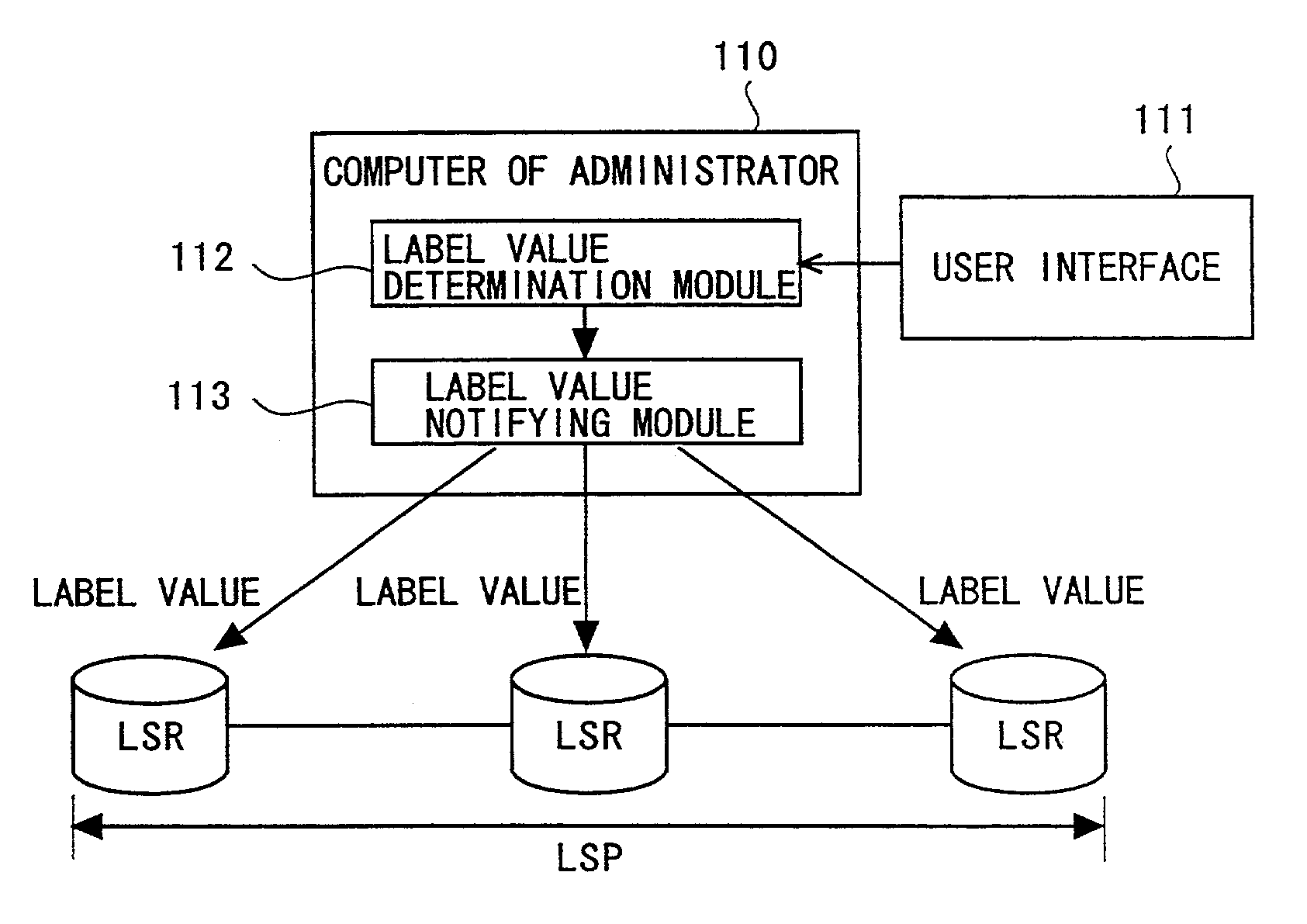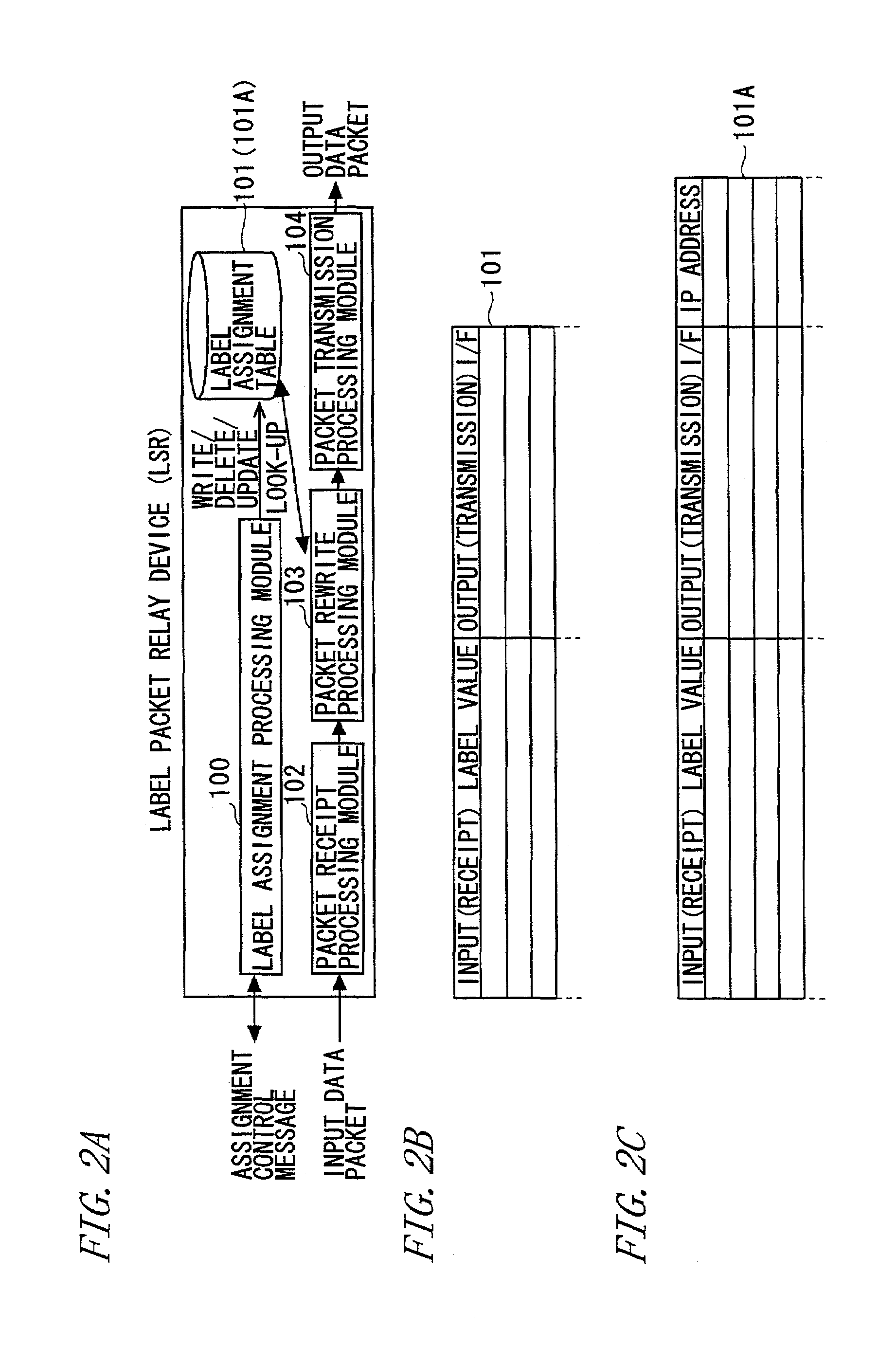Link identifier assignment system in connection-oriented communication network
a communication network and assignment system technology, applied in data switching networks, frequency-division multiplexes, instruments, etc., can solve the problems of increasing the processing load of the protocol for assigning the labels on the high-order layer, invalid label values used so far, and communication interruptions during a period, so as to reduce the increase of cost
- Summary
- Abstract
- Description
- Claims
- Application Information
AI Technical Summary
Benefits of technology
Problems solved by technology
Method used
Image
Examples
first embodiment
[0048]
[0049]FIGS. 3 and 4 are diagrams each showing an example of the architecture of the connection-oriented communication network in a first embodiment of the present invention. What is herein considered is, as shown in FIG. 3A, an example where a plurality of LSRs-A, B, C, D, E and F are connected via OXCs-1, 2 and 3. At a first-tiered level (a lower-order layer: an optical wavelength network), six lengths of optical paths OP1 to OP6 for connecting the LSRs are established as shown in FIG. 3B. This connection state is set as an initial topology.
[0050]As a second higher-order layer (a higher-order layer: an MPLS network (label switching network)) than the first layer, MPLS-tiered connection (LSP (Label Switch Path)) can be connected between arbitrary LSRs by utilizing the first-tiered optical paths OP1 through OP6 as second-tiered links that have already been established in the initial topology. It is herein assumed that the LSP be established as particularized in, e.g., a Table 1...
second embodiment
[0121]Next, a second embodiment of the present invention will be described. The second embodiment, which will hereinafter be discussed, is an embodiment for providing a compatibility with the conventional system by mixing the method of assigning the same label value to all the node-to-node links configuring the connection as exemplified in the first embodiment with the conventional method of making the label value for identifying the connection different on the node-to-node links.
[0122]
[0123]The discussion in the second embodiment will be made, as in the first embodiment, by exemplifying the network having the architecture shown in FIGS. 3 and 4 as the initial topology.
[0124]
[0125]As shown in FIG. 4A, if the LSPs1–5 are established, it is required that the label values used between the LSRs be assigned to the respective LSPs1–5. For instance, according to the conventional MPLS, the label value is a value entered in the 20-bit shim header defined by the MPLS. This label value can be ...
third embodiment
[0146]
[0147]The discussion in a third embodiment will be focused on a method of assigning the same label value to not all the links used for configuring the LSP but some proportion of these links. It is now considered to exemplify the same network including the same initial topology having the connection established as shown in FIGS. 3 and 4 as those in the first and second embodiments. Now, the discussion will be made, as in the first and second embodiments, by exemplifying the network having the connection established as the initial topology shown in FIGS. 3 and 4.
[0148]
[0149]According to the third embodiment, the label assignment processing module 100 (see FIGS. 2A and 10A) provided in the LSR assigns the same label value to some links between the plurality of LSRs at the ingress and the egress on a specified LSP. For example, the label assignment processing module 100 assigns a label value “7” to the link between the LSR-A and the LSR-C and the label value “5” to the links betwe...
PUM
 Login to View More
Login to View More Abstract
Description
Claims
Application Information
 Login to View More
Login to View More - R&D
- Intellectual Property
- Life Sciences
- Materials
- Tech Scout
- Unparalleled Data Quality
- Higher Quality Content
- 60% Fewer Hallucinations
Browse by: Latest US Patents, China's latest patents, Technical Efficacy Thesaurus, Application Domain, Technology Topic, Popular Technical Reports.
© 2025 PatSnap. All rights reserved.Legal|Privacy policy|Modern Slavery Act Transparency Statement|Sitemap|About US| Contact US: help@patsnap.com



